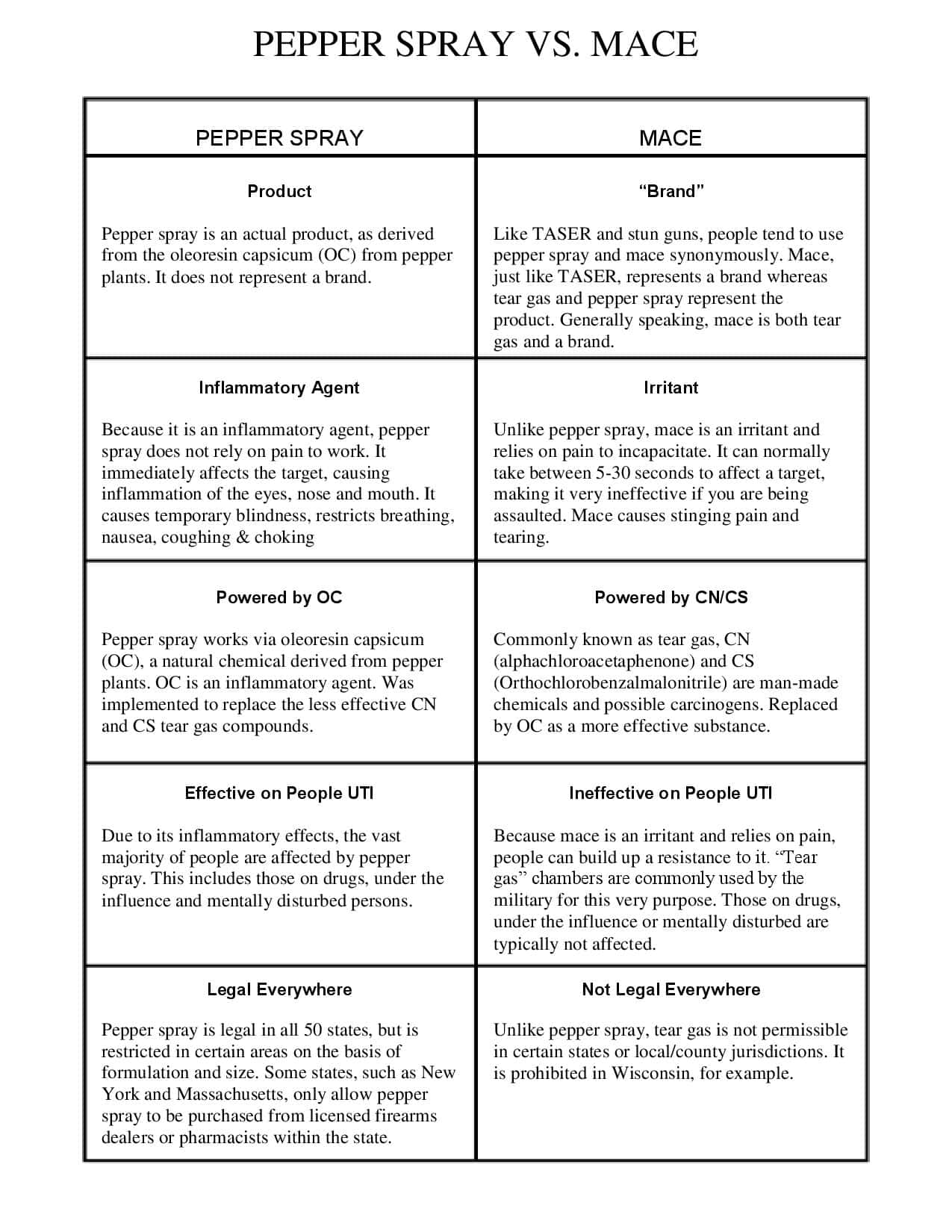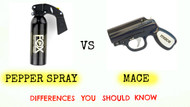Pepper Spray vs. Mace Important Differences: Which is Better?
Posted by Ulrich Faircloth on 18th Nov 2016
When people think of pepper spray they immediately think of “Mace." But did you know that they are completely different things? Pepper spray and Mace affect the human body in different ways, as they are two different chemicals. It’s just the branding that tends to differentiate the two from one another. Both pepper spray and Mace are non-lethal or less-lethal self-defense options. Which is worse mace or pepper spray?
Is Pepper Spray and Mace the Same?
Pepper spray is formulated from oleoresin capsicum (OC), a natural derivative of pepper plants; capsaicin is the main component. It is an inflammatory agent, which makes all the difference in self-defense.
Like the TASER, pepper spray causes the human body to react involuntarily. When hit with spray, the mucous membranes in the body swell up. The effects are substantial, with the most important and notable being involuntary eye closure; essentially causing temporary blindness for up to 15 minutes.
Other effects include an intense burning sensation with choking, coughing and restriction of breathing to life support status. The effects typically last between 30-45 minutes, giving you plenty of time to escape an attacker.
Mace, also known as an aerosol self-defense spray, is actually in reference to a brand name, Mace International, much in the way that the TASER is in reference to TASER International. While Mace International sells home security products, it is most well-known for being the first commercial pepper spray manufacturer.
The important thing to know is that Mace is often referred to as tear gas, a type of nerve agent used in crowd or riot control, because it uses tear gas compounds.
There are two different kinds of tear gases that are used in conjunction with various pepper sprays:
- Alphachloroacetaphenone (CN) – The older of the two, CN was used during World War I as a harassing agent. CN is the only tear gas still used in Mace products today.
- Orthochlorobenzalmalonitrile (CS) – Discovered in 1928, CS replaced CN during the Vietnam War in the 1950s. CS is much less toxic and more potent but it wears off a lot quicker than its counterpart.

Which is Better Mace or Pepper Spray?
Pepper spray – OC is a natural inflammatory agent that forces a person’s eyes to shut involuntarily and cause respiratory distress for up to an hour. Unlike tear gas the effects are immediate, giving you plenty of time to get away to safety. It also wears off quickly and leaves no permanent damage.
Mace – Unlike OC, tear gas (or CS/CN) is an irritant and a man-made chemical (possibly carcinogenic). Effects involve tearing (hence the term “tear gas”), coughing, choking and skin irritation. Tear gas relies on pain in order to be effective and takes an average of 5 to 30 seconds to kick in!
This makes it very ineffective towards those who have a high tolerance to pain, namely individuals under the influence, intoxicated and the mentally disturbed. The other problem is that you can build up a resistance to it through exposure, which some members of the military do. Decontamination procedures are more difficult as well because the chemical residue can last for days.
Which one is worse mace or pepper pepper spray? Pepper spray!
Let’s face it. If I am getting a self-defense product for my personal protection I want to make sure that it WORKS and that it works IMMEDIATELY. This is the downside with Mace and other tear gas formulated defense sprays. If you are picking a pepper spray, we recommend that you go for pure OC and not an OC/CS or CN mixture. There is too much to risk with tear gas.
Need a specific recommendation for your situation? Contact us at support@srselfdefense.com and we’ll help you out!

 Menu
Menu
 Item(s)
Item(s)
